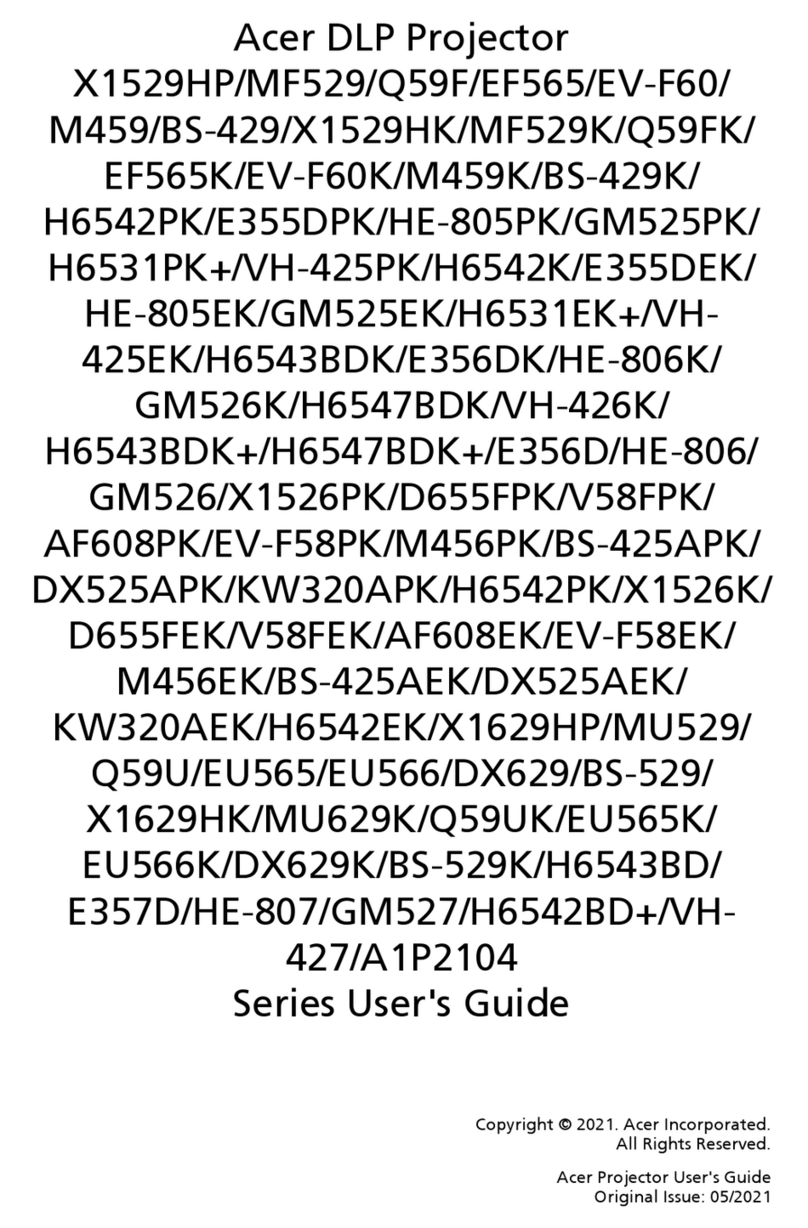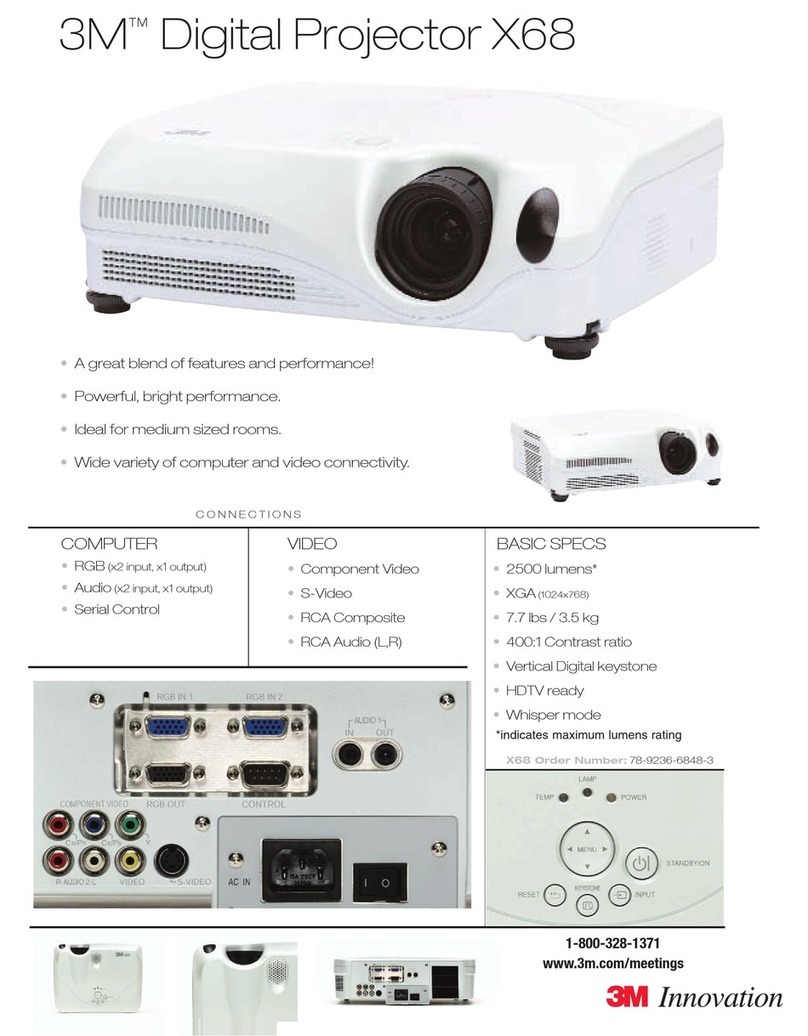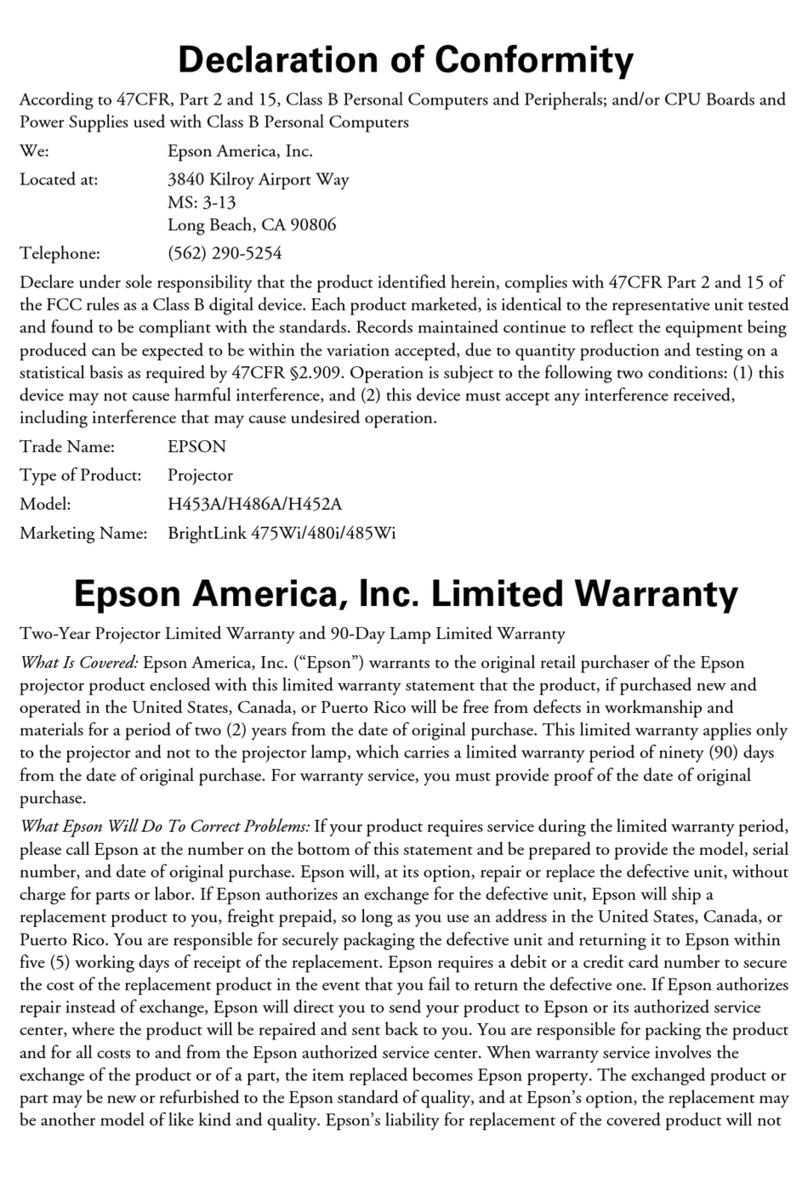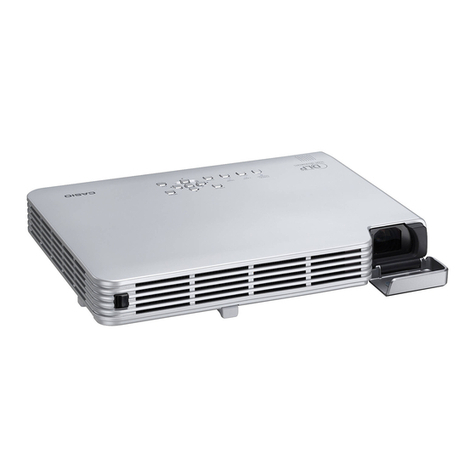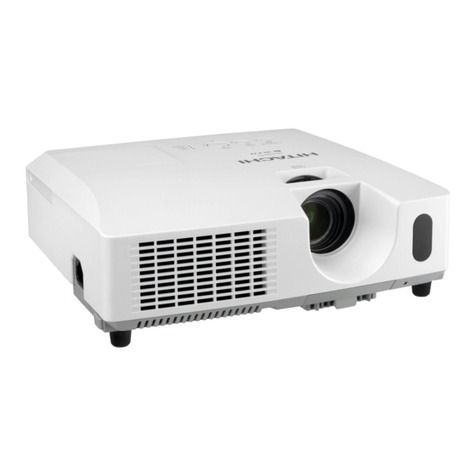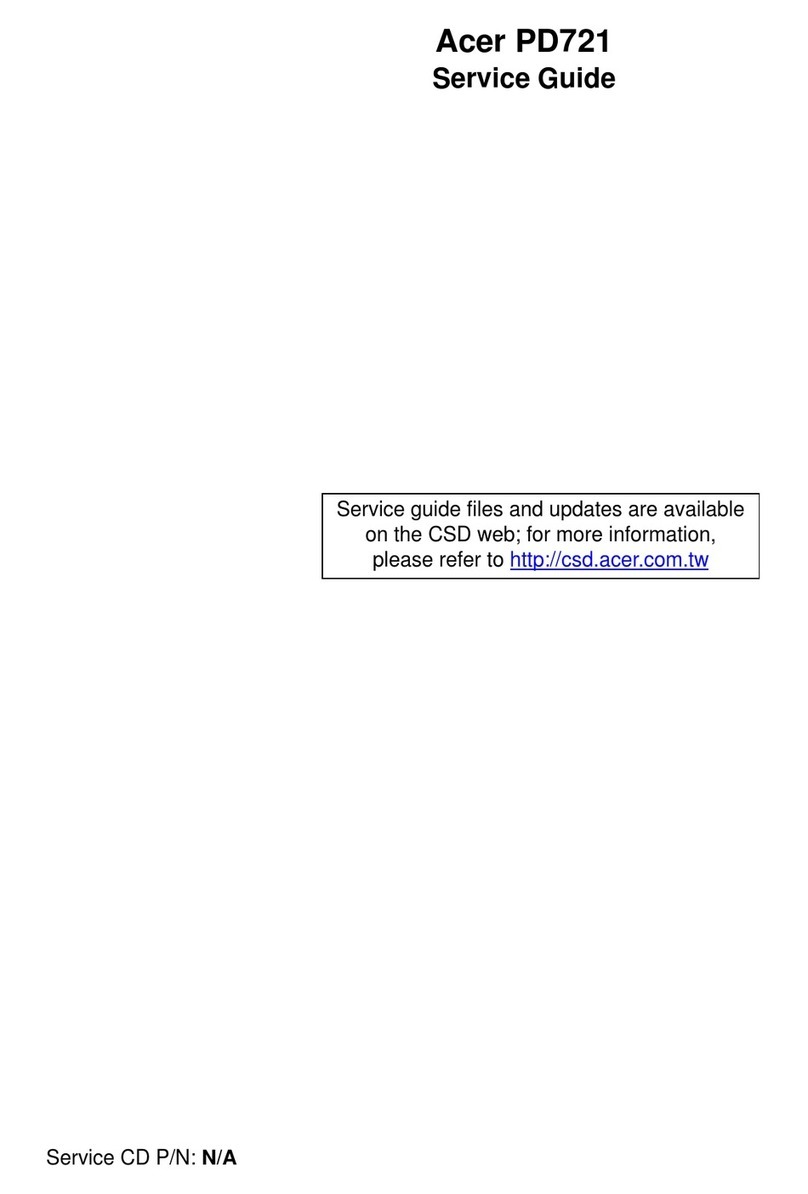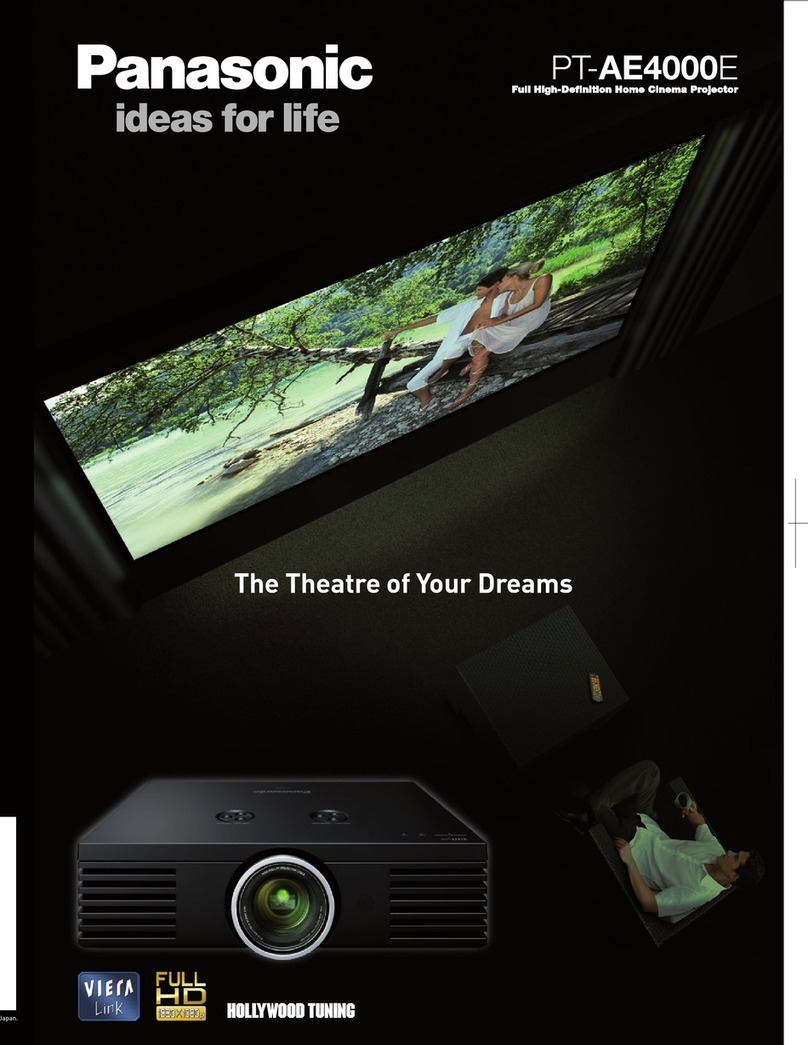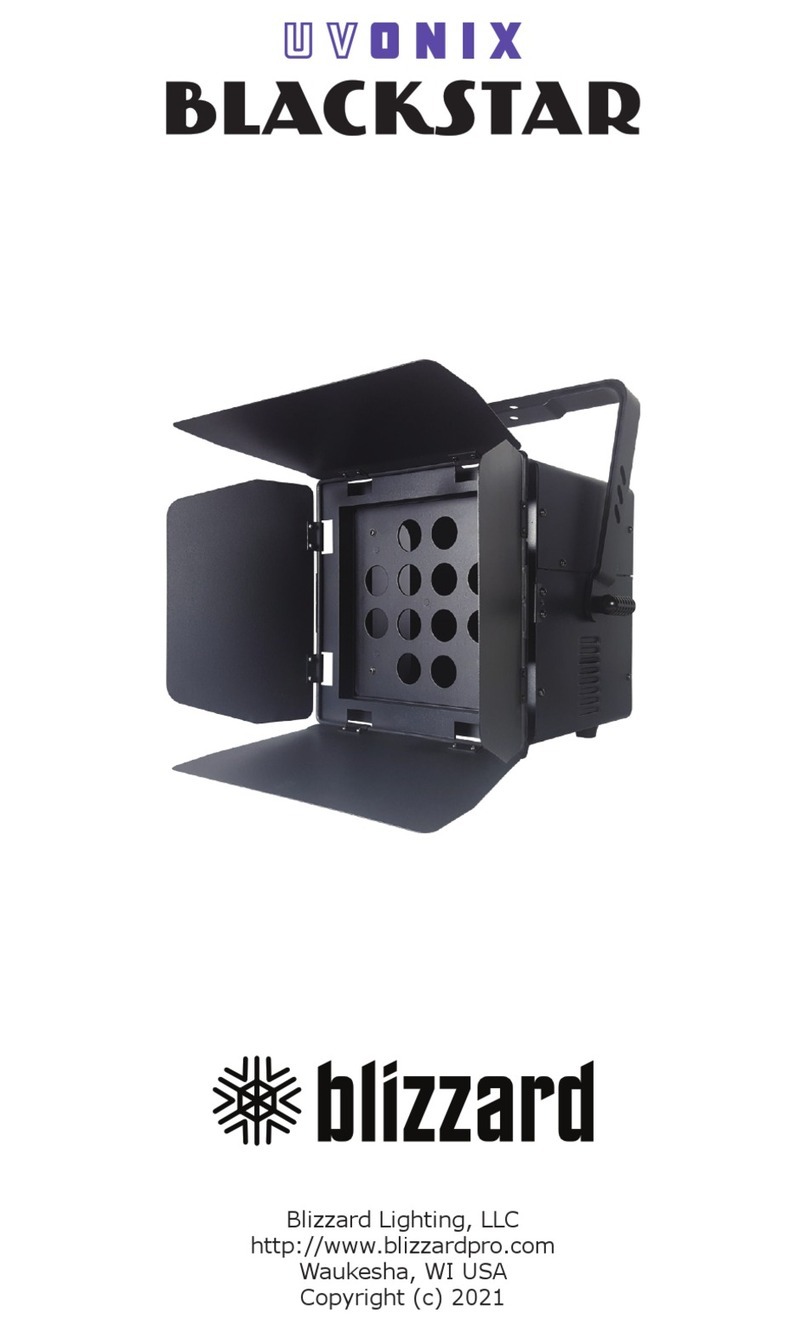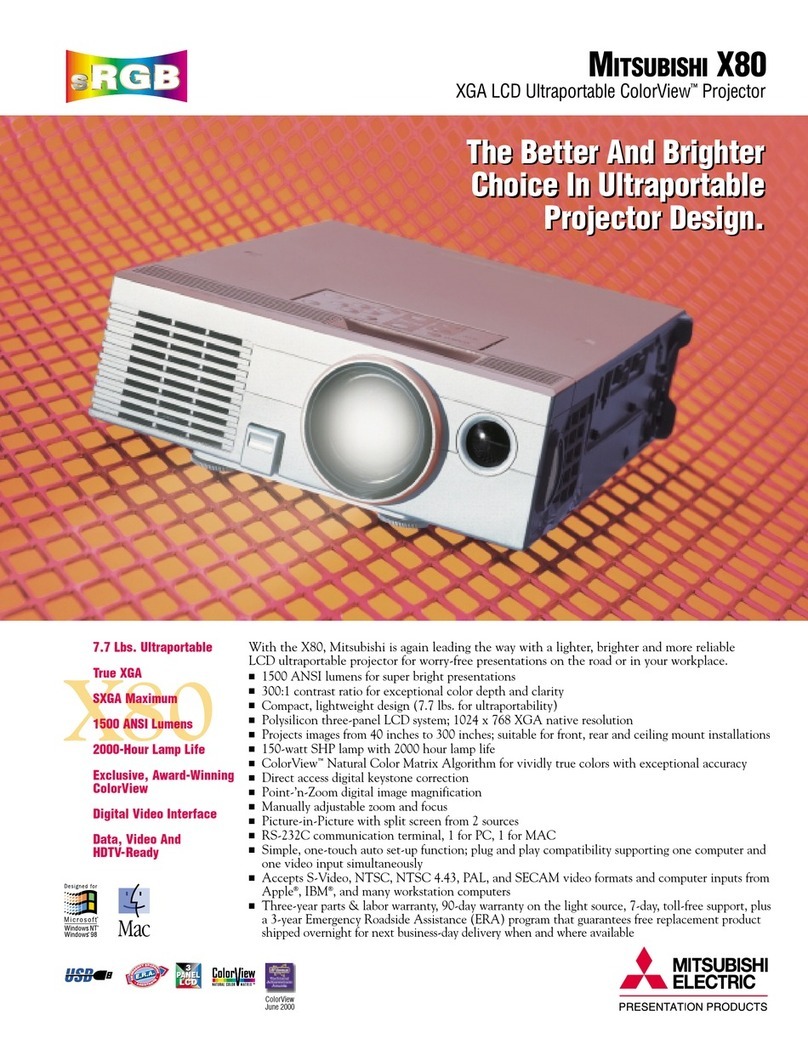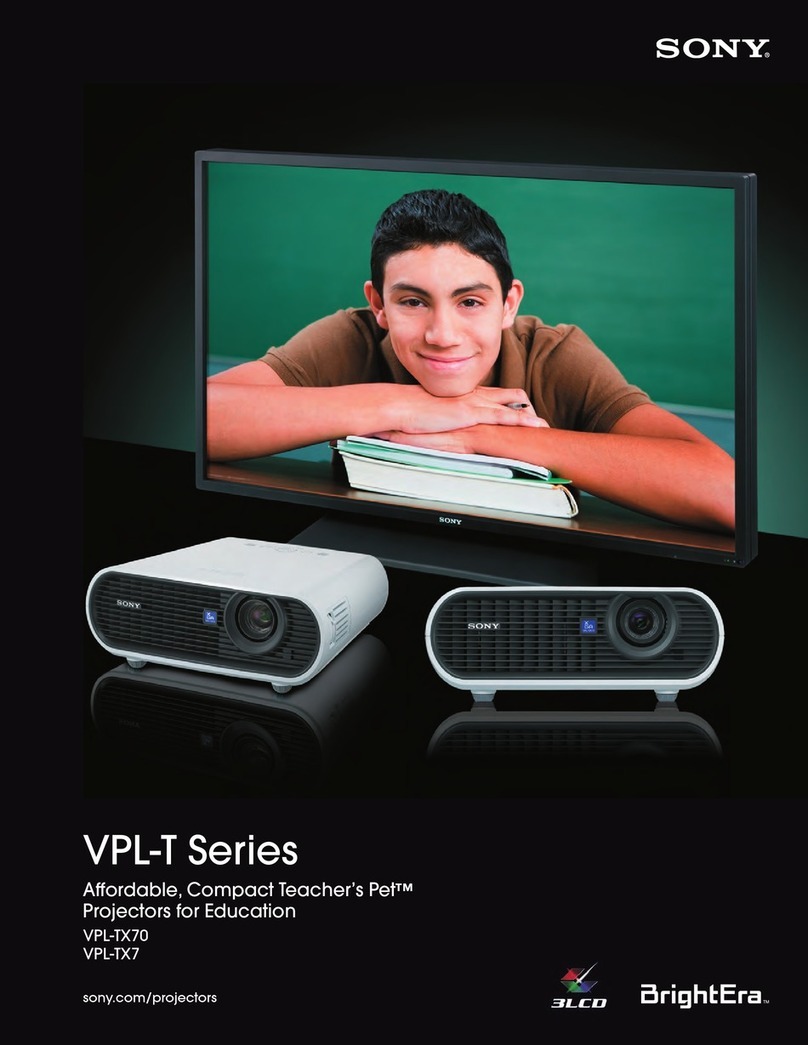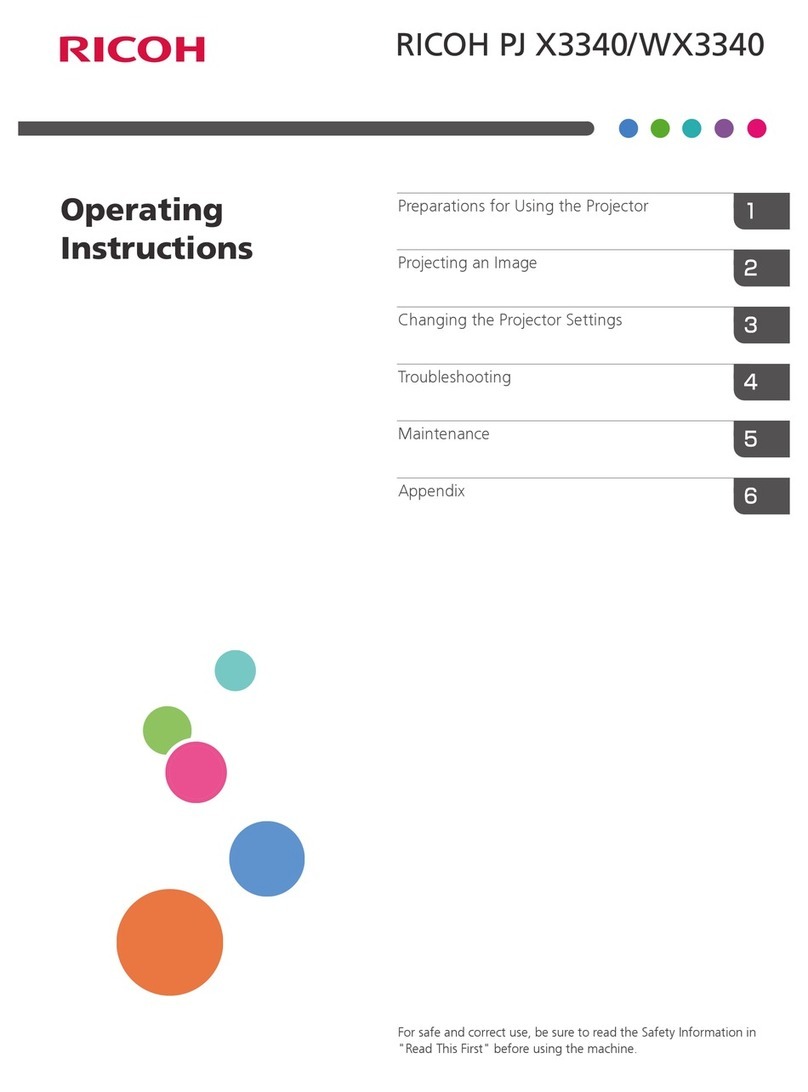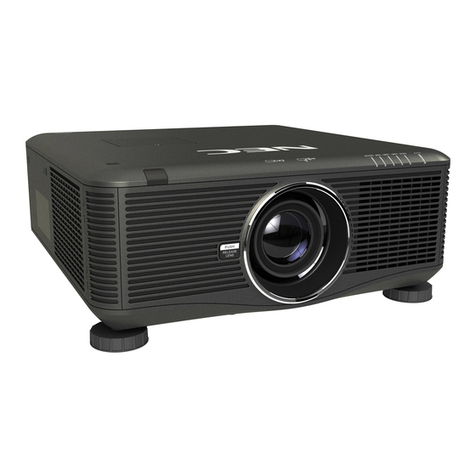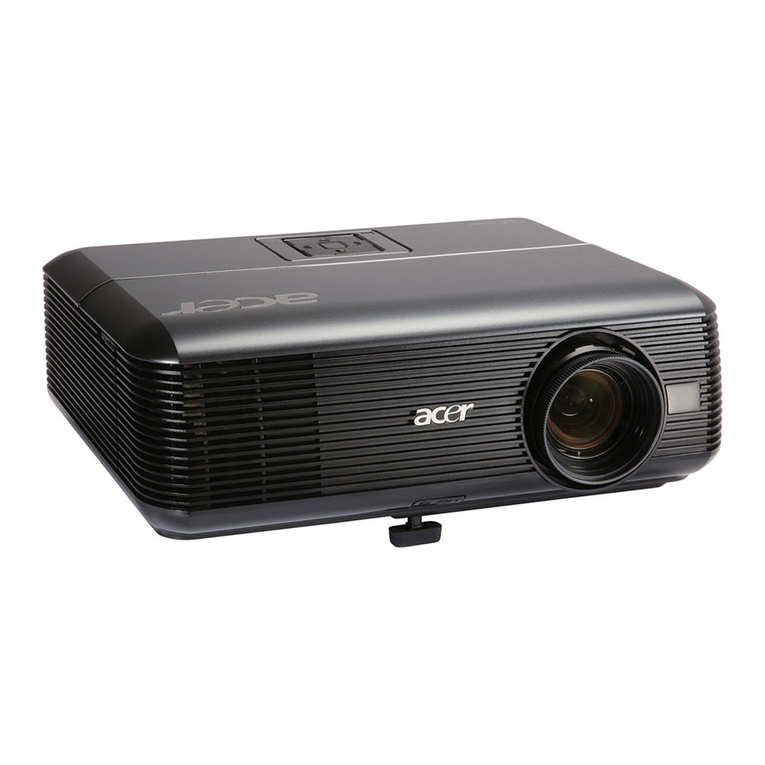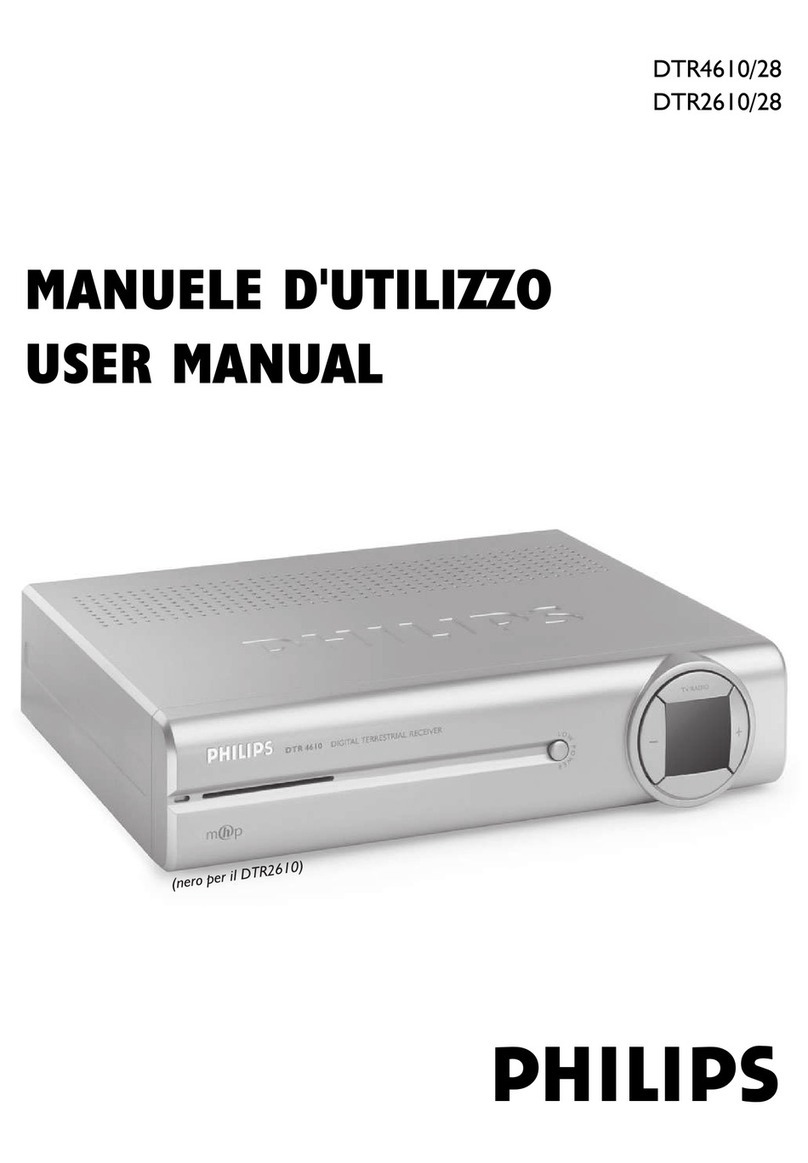Linear Technologie LINEARLEDS LTL.LYA200 User manual

Linear Technologie • 11 rue du Puits Rochefort • 42 100 Saint-Etienne
Tél: +33 (0)4 77 81 49 49 • Fax: +33 (0)4 77 81 49 40 • www.lineartech.fr V.2017
PROJECTOR LTL.LYA200
Operation manual

2
TABLE OF CONTENTS
Page 3
Page 3
Page 5
Page 6
Page 6
Page 8
Page 9
Page 10
Page 13
Page 15
Page 17
Page 22
Page 24
Page 25
Page 26
Page 27
1. Dimensions
2. Safety information
3. Fixture overview
4. Introduction
5. AC power
6. Data link
7. Physical installation
8. Setup
9. Operation and eects
10. Service and maintenance
11. DMX protocol
12. FX: pre-programmed eects
13. LEE colors and RGB equivalents
14. Onboard control menus
15. Display messages
16. Specications

3
1. DIMENSIONS
All dimensions are in millimeters.
2. SAFETY INFORMATION
The following symbols are used to identify important safety information on the product and
in this manual :
DANGER!
Safety
hazard.
Risk of
severe injury
or death.
DANGER!
Hazardous
voltage. Risk
of lethal
or severe
electric
shock.
WARNING!
Fire hazard.
WARNING!
LED light
emission.
Risk of eye
injury.
WARNING!
Burn hazard.
Hot surface.
Do not touch.
WARNING!
Wear
protective
eye wear.
WARNING!
Refer to user
manual.
WARNING!
Read the safety precautions in this section before installing, powering, operating
or servicing this product.
Warning! Risk group 3 (high risk) LED product according to EN 62471. Do
not look into the beam at a distance of less than 8.3 meters (27 ft. 3 inches)
from the front surface of the product. Do not view the light output with optical
instruments or any device that may concentrate the beam.
This product is for professional use only. It is not for household use.
This product presents risks of severe injury or death due to re and burn
hazards, electric shock and falls.

4
Read this manual before installing, powering or servicing the xture, follow the
safety precautions listed below and observe all warnings in this manual and
printed on the xture. If you have questions about how to operate the xture
safely, please contact your supplier.
Protection from electric shock
• Disconnect the xture from AC power before removing or installing any
cover or part and when not in use.
• Always ground (earth) the xture electrically.
• Use only a source of AC power that complies with local building and electrical
codes and has both overload and ground-fault (earth-fault) protection.
• Before using the xture, check that all power distribution equipment and
cables are in perfect condition and rated for the current requirements of all
connected devices.
• Power input and through put cables must be3-conductor, rated 20 A
minimum, 1.5 mm² (16 AWG) minimum conductor size, power input and
through put cables must be3-conductor, rated 20 A minimum, 1.5 mm² (16
AWG) minimum conductor size, extra hard usage type (ST or equivalent)
The cable must be heat-resistant to 90° C (194° F) minimum.
• Use only neutrik powercon NAC3FCA cable connectors to connect to power
input sockets. Use only neutrik powercon NAC3FCB cable connectors to
connect to power throughput sockets.
• Isolate the xture from power immediately if the power plug or any seal,
cover, cable, or other component is damaged, defective, deformed, wet or
showing signs of overheating. Do not reapply power until repairs have been
completed.
• Do not expose the xture to rain or moisture.
• Refer any service operation not described in this manual to a qualied
technician.
• Socket outlets used to supply LYA200 xtures with power or external power
switches must be located near the xtures and easily accessible so that the
xtures can easily be disconnected from power.
Protection from burns and re
• Do not operate the xture if the ambient temperature (Ta) exceeds 40°C
(104°F)
• The exterior of the xture becomes hot during use. Avoid contact by
persons and materials. Allow the xture to cool for at least 10 minutes
before handling.
• Keep all combustible materials (e.g. fabric, wood, paper) at least 100 mm
(3.9 inch) away from the head.
• Keep ammable materials well away from the xture.
• Ensure that there is free and unobstructed airow around the xture.
• Do not illuminate surfaces within 200 mm (7.9 ins.) of the LYA200.
• Do not attempt to bypass thermostatic switches or fuses.
• If you relay power from one xture to another using power throughput
sockets, do not connect more than ten LYA200 xtures in total to each other
in an interconnected chain.
• Connect only other LYA200 xtures to LYA200 power throughput sockets.
Do not connect any other type of device to these sockets.
• Do not stick lters, masks or other materials onto any optical component.
• Do not modify the xture in any way not described in this manual.

5
Protection from injury
• Do not look continuously at LED from a distance of less than 8.3 meters (27
ft. 3 inches) from the front surface of the xture without protective eye wear
such as shade 4-5 welding goggles. At less than this distance, the LED
emission can cause eye injury or irritation. At distances of 8.3 meters (27
ft. 3 inches) and above, light output is harmless to the naked eye provided
that the eye’s natural aversion response is not overcome.
• Do not look at LED with magniers, telescopes, binoculars or similar optical
instruments that may concentrate the light output.
• Ensure that persons are not looking at the LED from within 8.3 meters
(27 ft. 3 inches) when the product lights up suddenly. This can happen
when power is applied, when the product receives a DMX signal, or when
SERVICE menu items are selected.
• Fasten the xture securely to a xed surface or structure when in use. The
xture is not portable when installed.
• Ensure that any supporting structure and / or hardware used can hold at
least 10 times the weight of all the devices they support.
• If suspending from a rigging structure, fasten the xture to a rigging clamp
with an M12 bolt screwed into the threaded hole in the center of the base
of the xture. The bolt must protrude at least 20 - 30 mm (0.8 - 1.2 ins.) into
the xture. If the xture is suspended by any other method, an M12 bolt
must be tightened into this hole so that it protrudes at least 20 - 30 mm (0.8
- 1.2 ins.) into the xture.
• Allow enough clearance around the head to ensure that it cannot collide
with an object or another xture when it moves.
• Check that all external covers and rigging hardware are securely fastened.
• Block access below the work area and work from a stable platform whenever
installing, servicing or moving the xture.
• Do not operate the xture with missing or damaged covers, shields or any
optical component.
3. FIXTURE OVERVIEW

6
This compact LED-based moving-head wash-light features :
• Independent or linked beam (primary LED array) and aura (secondary background LED
array) control. Range of pre-programmed independent and synchronized beam and aura
eects available via DMX that give instant access to the full potential of the xture
• Beam RGBW color control with color temperature control
• Aura RGB control
• «Color wheel» color snap beam and aura eects
• On board control panel and backlit LCD graphic display
• Motorized zoom
• Smooth electronic dimming
• Electronic shutter with strobe and pulse eects
• Calibrated and raw modes
• Osram ostar high-power emitters
• DMX control
• 540° pan and 232° tilt ranges
Using for the rst time
4. INTRODUCTION
Warning! Read “Safety information” before installing, powering, operating or
servicing the LYA200. Before applying power to the xture :
• Carefully review “Safety information”.
• Check that the local AC mains power source is within the xture’s power
voltage and frequency ranges.
• See “Power cables and power plug”. Install a neutrik powercon NAC3FCA
power input connector on a suitable power cable. If drawing power from a
mains power outlet, install a suitable power plug on the power cable.
5. AC POWER
Warning ! Read “Safety information” before connecting the xtures to AC mains
power.
Warning ! For protection from electric shock, the LYA200 must be grounded
(earthed) The power distribution circuit must be equipped with a fuse or circuit
breaker and ground-fault (earth-fault) protection.
Warning ! Socket outlets or external power switches used to supply the LYA200
with power must be located near the xture and easily accessible so that the
xtures can easily be disconnected from power.
Important ! Do not insert or remove live neutrik powercon connectors to apply
or cut power, as this may cause arcing at the terminals that will damage the
connectors.
Important ! Do not use an external dimming system to supply power to the
LYA200, as this may cause damage to the xture that is not covered by the
product warranty.
The LYA200 can be hard-wired to a building electrical installation if you want to
install it permanently, or a power plug that is suitable for the local power outlets
can be installed on the power cable.

7
Power voltage
Warning! Check that the voltage range specied on the xture s serial
number label matches the local AC mains power voltage before applying
power to the xture.
The xtures accept AC mains power at 100-240 V nominal, 50/60 Hz. Do not
apply AC mains power to the xture at any other voltage than that specied on
the xture’s serial number label.
Power cables and power plug
Power input and throughput cables must be rated 20 A minimum, have three conductors 1.5
mm² (16 AWG) minimum conductor size and an outer cable diameter of 5 - 15 mm (0.2 - 0.6
in) Cables must be hard usage type (SJT or equivalent) and heat-resistant to 90° C (194° F)
minimum. In the EU the cable must be HAR approved or equivalent.
If you install a power plug on the power cable, install a grounding-type (earthed) plug that is
rated 20 A minimum. Follow the plug manufacturer’s instructions. Table 1 shows standard
wire color coding schemes and some possible pin identication schemes; if pins are not
clearly identied, or if you have any doubts about proper installation, consult a qualied
electrician.
Wire color (EU
models)
Wire color (US
models) Conductor Symbol Screw (US)
Brown Black Live L Yellow or brass
Blue White Neutral N Silver
Yellow / green Green Ground (Earth) Green
Installing a power input connector on a power cable.
To install a neutrik powercon NAC3FCA input connector on a power cable :
1. Slide the bushing over the cable.
2. Slide the white chuck over cables with a diameter (Da) of 5 - 10 mm (0.2
- 0.4 in.) or the black chuck over cables with a diameter of 10 - 15 mm
(0.4 - 0.6 in)
3. Prepare the end of the cable by stripping 20 mm (0.8 in) of the cable’s
outer jacket.
4. Strip 8 mm (1/3 in) from the end of each of the wires.
5. Insert each of the wire ends into the appropriate terminal (see instructions
and table 1 above) and fasten the clamping device using a small fathead
screw driver.
6. Push and insert the chuck into the housing (note that there is a raised key
on the chuck to ensure that it is oriented correctly)
7. Fasten the bushing using a wrench to a torque of 2.5 Nm (1.8 lb.-ft)
Illustrations above used by kind permission of neutrik AG.

8
A DMX 512 data link is required in order to control a LYA200 via DMX.
The LYA200 has 3-pin XLR connectors for DMX data input and output. The pin-out on all
connectors is pin 1 = shield, pin 2 = cold (-), and pin 3 = hot (+).
To add more xtures or groups of xtures when the above limit is reached, add a DMX
universe and another daisy-chained link.
Tips for reliable data transmission
Use shielded twisted-pair cable designed for RS-485 devices : Standard microphone cable
cannot transmit control data reliably over long runs. 24 AWG cable is suitable for runs up to
300 meters (1000 ft) Heavier gauge cable and/or an amplier is recommended for longer
runs.
Connecting the data link
To connect the A200 to data :
1. Connect the DMX data output from the controller to the closest LYA200’s male 3-pin XLR
DMX input connector.
2. Connect the DMX output of the xture closest to the controller to the DMX input of the
next xture and continue connecting xtures output to input.
Relaying power to other devices
Warning! Do not connect more than ten LYA200 xtures in total to AC
mains power in on interconnected chain.
Power can be relayed to another device via the light-grey powercon throughput
socket that accepts a light-grey powercon NAC3FCB cable connector. Note
that blue input and light-grey throughput connectors have dierent designs :
One type cannot be connected to the other.
If you link xtures in a chain so that they all draw AC mains power via the rst
xture, certain points must be respected :
• A hard usage, three-conductor, 16 AWG or 1.5 mm cable with SJT or
equivalent cable jacket must be used to connect the rst xture to AC mains
power and to interconnect all the xtures in the chain up to a maximum of
seven xtures in total.
• Light-grey neutrik powercon NAC3FCB connectors must be used to draw
AC mains power from the xtures’ power throughput sockets and blue
neutrik powercon NAC3FCA connectors must be used to supply power at
the xture’s power input sockets.
• No matter what the AC mains power voltage is, do not connect more than
ten LYA200 xtures in total(i.e. including the rst xture) to AC mains
power in one interconnected daisy chain using power input and throughput
connectors.
6. DATA LINK

9
7. PHYSICAL INSTALLATION
Warning ! The LYA200 must be either fastened to a at surface such as a
stage or wall, or clamped to a truss or similar structure in any orientation using
a rigging clamp. Do not apply power to the xture if it is standing freely or the
xture can be moved.
Warning ! If the xture can cause injury or damage it if falls, attach an approved
safety cable to one of the safety cable attachment points on the base (see
“Fixture overview”)
Check that all surfaces to be illuminated are minimum 200 mm (7.9 ins) from
the xture, that combustible materials (wood, fabric, paper, etc) are minimum
100 mm (3.9 in) from the head, that there is free airow around the xture and
that there are no ammable materials nearby.
Make sure that it is impossible for the moving head to collide with another
xture or other object ...
Fastening the xture to a at surface
The LYA200 can be fastened to a xed at surface that is oriented at any angle.
Check that the surface can support at least 10 times the weight of all xtures
and equipment to be installed on it.
Warning ! The supporting surface must be hard and at or air vents in the base
may be blocked, which will cause overheating. Fasten the xture securely. Do
not stand it on a surface or leave it where it can be moved or can fall over.
Attach a securely anchored safety cable to the safety cable attachment point
(see “Fixture overview”) if the xture is to be installed in any location where it
may fall and cause injury or damage if the primary attachment fails.
Mounting the xture on a truss
The LYA200 can be clamped to a truss or similar rigging structure in any
orientation.
Warning ! Use a rigging clamp with an M12 bolt if suspending the xture from
its base. The clamp must be screwed into the central threaded hole in the
xture base. The M12 bolt must protrude 20 - 30 mm (0.8 - 1.2 ins) into the
xture base.
An M12 bolt that is suitable for many types of rigging clamp is supplied with
the xture but you must pass the bolt through the clamp and check that the
distance the bolt will protrude into the xture base is within the 20 - 30 mm
limits before using it. If the bolt is not within these limits, you must nd an
alternative bolt that is.
To clamp a LYA200 to a truss :
1. Check that the rigging structure can support
at least 10 times the weight of all xtures and
equipment to be installed on it.

10
2. Check that the rigging clamp is undamaged and can bear at least 10 times the weight of
the xture. Fasten the clamp to the xture with a minimum grade 8.8 steel M12 bolt in the
threaded hole in the center of the base of the xture. The bolt must protrude 20 - 30 mm (0.8
- 1.2 ins) into the base of the xture.
3. Block access under the work area. Working from a stable platform, hang the xture on
the truss with the arrow on the base towards the area to be illuminated. Tighten the rigging
clamp.
4. Secure the xture against clamp failure with a secondary attachment such as an approved
safety cable that is rated for the weight of the xture using one of the attachment points at
the edges of the base (see “Fixture overview”) Do not use any other part of the xture as a
safety cable attachment point.
5. Check that the head will not collide with other xtures or objects.
Hanging the xture
In some regions, it may be legal to use two safety cables, one looped through
one cable attachment point (see “Fixture overview”) and the other looped
through the other cable attachment point, to suspend the xture. If one cable
fails, the other will provide secondary attachment.
However, this suspension method is not recommended as it will not hold the
base rmly, and moving pan and tilt will cause the xture and light beam to
swing uncontrollably. Instead, we strongly recommend installation using a
rigging clamp as described above.
Warning! If you choose to suspend using two cables anyway, you must install a
minimum 8.8 grade steel M12 bolt in the rigging clamp hole in the center of the
xture’s base. See gure 2. The bolt must protrude 20 - 30 mm (0.8 - 1.2 ins)
into the base. If you do not secure the base in this way, there is a risk that the
xture may separate from the base and fall.
Quick-mount surface mounting bracket
The bracket can be screwed to a surface and the LYA200 mounted on and removed from the
bracket in seconds. A securely anchored safety cable or other secondary attachment must
be provided if the bracket is used.
8. SETUP
Warning! Read “Safety information” before installing, powering, operating or
servicing the xture.
Control panel and menu navigation
The on board control panel and backlit graphic display are used to set the 200‘s DMX
address, congure individual xture settings (personality), read out data and execute service
utilities. See “On board control menus” for a complete list of menus and commands.

11
Using the control buttons
To enter a menu, select a function or apply a selection, press ► (Enter)
Press ▲ (Up) and ▼ (Down) to scroll within a menu or adjust values.
To escape a function or move back one level in the menu structure, press ◄ (Menu / Escape)
Control button reset short cut.
Holding ◄ (Menu/Escape) pressed in and pressing ▲ (Up) forces the xture to reset.
DMX address setting
The DMX address, also known as the start channel, is the rst channel used to receive
instructions from the controller. For independent control, each xture must be assigned its
own control channels. Two LYA200 xtures of the same type may share the same address,
however, if identical behaviour is desired. Address sharing can be useful for diagnostic
purposes and symmetric control, particularly when combined with the inverse pan and tilt
options.
The DMX address is congured using the DMX ADDRESS menu in the control panel.
Beam, aura and FX control
Normal and advanced modes
DMX control mode is selected in the CONTROL MODE menu. The LYA200 has two DMX
control modes :
• NORMAL (normal mode – uses 14 DMX channels)
• ADVANCED (advanced mode – uses 25 DMX channels)
NORMAL mode
When the LYA200 is set to NORMAL standard mode, the Beam DMX channels 1 - 14 control
the output of both the beam and the LYA200. The behaviour of the beam and aura are
identical.
Extended mode
When the LYA200 is set to ADVANCED extended mode :
• Independent control of the beam is available on channels 1 - 14
• A range of FX (pre-programmed eects with combined beam and aura output) is available
on channels 15 - 19.
• Independent control of the aura is available on channels 20 - 25.
See “DMX protocol” for details of the DMX commands available in the dierent modes.
Tailoring performance
Pan and tilt movement
The P/T SPEED settings set the maximum speed of pan and tilt movement. FAST optimizes
for speed and SLOW optimizes for smoothness of movement. NORMAL is the default setting
and gives a good compromise between these two.
The PAN INVERT and TILT INVERT commands reverse the direction of pan and tilt and the
SWAP command sends pan commands to tilt and vice versa. These settings are useful for
symmetrical eects with multiple xtures.

12
Cooling
FANS gives you a choice of two settings :
• The default setting REGULATED should suit use in all normal situations and ensure
excellent service lifetimes for all components.
• FULL maximizes cooling and reduces the operating temperature of the components in
the head. It is recommended when the LYA200 is used intensively in a warm environment
or in xed installations. Note that it will give increased fan noise compared to the other
cooling modes.
Whatever cooling mode is selected, a thermal cut out shuts down power to the LED if the
xture temperature exceeds safe limits. If this occurs, you must reset the xture via the
control menus or via DMX, or cycle power to the xture o and on again.
If a thermal shut down occurs, you are pushing the xture to its limits. Clean the xture,
particularly the air vents, and check that there is sucient airow around the xture. Consider
increasing ventilation, reducing the ambient temperature, or switching to FULL mode.
Dimming
DIMMER CURVE provides four dimming options :
• LINEAR – the increase in light intensity appears to be linear as DMX value is increased.
• SQUARE LAW – light intensity control is ner at low levels and coarser at high levels.
• INVERSE SQUARE LAW – light intensity control is coarser at low levels and ner at high
levels.
• S-CURVE – light intensity control is ner at low levels and high levels and coarser at
medium levels. Whichever DIMMER CURVE option you select, you can choose between
FAST or SMOOTH dimming settings :
• FAST is the default setting. It gives a virtually instantaneous reaction when you dim from
one intensity to another but dimming slowly from one intensity to another may appear
slightly uneven.
• The SMOOTH setting gives smoother dimming during slow changes in intensity, but
it limits the speed of dimming changes slightly. This makes it ideal for slow, smooth
dimming, but a short time-lag may be noticeable if you try to dim quickly from one intensity
to another.
Restoring factory default settings
The LYA200 factory default settings can be restored by applying a FACTORY SETTING →
LOAD command.

13
9. OPERATION AND EFFECTS
Warning! Read “Safety information” before installing, powering, operating or
servicing the LYA200.
This section describes only DMX control features that require particular
explanation. See “DMX protocols” for a full list of the DMX channels and values
required to control the dierent eects.
Eects
Beam and aura
The LYA200 has two LED arrays :
• The Beam : The LEDs that provide the main output.
• The Aura: The secondary LED that illuminate the front of the head, provide local diuse
light output and can be set to contrast with the beam output.
See “Beam, aura and FX control” for full details of these modes and how to set them up.
Shutter eect
The electronic ‘shutter’ eect available for the beam and the aura provides instant open and
blackout, variable speed regular and random strobe and opening/closing pulse eects as
well as burst and sine wave eects.
Dimming
Beam and aura intensity can be adjusted 0 - 100% using electronic dimming. See the
available dimming curve options in “Dimming”.
Zoom
The beam can be zoomed from 58° to maximum (narrow) 11° one-tenth peak angles.
Aura output is automatically dimmed as the zoom approaches maximum. There is a linear
dimming curve from normal aura output when the beam is at 90% zoom, to zero aura output
when the beam is at maximum (narrow) zoom.
Pan and tilt
The LYA200 is moving head can be panned through 540 and tilted through 232 . The speed
of pan/tilt movement can be adjusted on the DMX xture control channel 8 and in the xture’
s on board control panel.
Both NORMAL and ADVANCED control modes oer ne control of pan and tilt. In each
case, the main control channel sets the rst 8 bits (the most signicant byte or MSB) and the
ne channel sets the second 8 bits (the least signicant byte or LSB) of the 16-bit control
byte. In other words, the ne channel works within the position set by the main channel.
Controlling color
Color wheel eects
The electronic ‘color wheel’ eects available for the beam and the aura give the convenience
and feel of a mechanical color wheel and let you snap between 33 dierent full LEE-referenced
colors. You can also scroll continuously forwards or backwards through the colors or display
random colors at variable speed.

14
The approximate RGB equivalents of the ‘color wheel’ colors are given in “LEE colors and
RGB equivalents”.
Color wheel priority
The color wheel eect channels for the beam and aura have priority and override any color
set on the beam RGBW channels or on the aura RGB channels. To use the RGBW and RGB
channels, you must set the color wheel eect channel for beam or aura respectively to a
DMX value from 000 - 009. If you set either color wheel channel to a DMX value above 009,
the color wheel eect overrides RGBW or RGB control.
RGBW and RGB control
RGBW (in raw mode) or RGB (in calibrated mode) color control is available for the beam and
RGB control is available for the aura.
CTC (Color Temperature Control)
CTC is available for the beam on the CTC channel 14. Setting this channel to DMX value
20 or above allows you to adjust the beam’ s overall color temperature, i.e. the color that
has been set using the color wheel channel or the RGBW channels. Note that the more
saturated the color, the less it will be aected by adjustments in color temperature. The
biggest CTC variation is available when displaying white.
Overall color temperature can be varied from 10 000-2500K.The default color temperature
is 5600K.
FX : Pre-programmed beam and aura eects
A library of pre-programmed eects in which beam and aura output can be independent or
synchronized is available via DMX. These eects are simply called FX in this manual and
in the xture menus. The library is available twice in the DMX channel layout with identical
functions and eects, and two dierent FX can be combined and run simultaneously with
one ‘superimposed’ over the other.
See “FX : pre-programmed eects” for an overview of the FX available.
Eects are selected using the FX select DMX channels 15 and 17. Where modication is
possible, the selected FX can be modied using its FX adjust channel. Modications can
include speed, amount, oset,smoothness, etc, depending on the FX selected.
FX sync and random operation
The FX system uses a dedicated internal synchronization clock. If two dierent FX that
repeat in cycles are activated, the FX Sync DMX channel 19 can be used to synchronize
them. When two FX are synchronized,the repeat cycle of FX2 is adjusted to ensure that FX2
arrives at the end of a cycle and starts to repeat the cycle at the same time as FX1.
If one FX with a short repeat cycle is combined with another FX with a long repeat cycle, the
short FX can repeat twice or more in the time it takes the long FX to repeat once. But if two
FX with dierent repeat cycles are synchronized, the short cycle is adjusted so that it arrives
at the end of a cycle at the same time as the long cycle.
Sync shift
The sync shift option modies FX synchronization so that FX2 runs with a time oset. This
means that the FX2 cycle start point is delayed relative to FX1 but the amount of the delay
remains constant.

15
Random operation
Selecting random operation makes random changes in the duration of those FX eects that
have repeat cycles. This means that some cycles are shorter and some cycles are longer in
a random pattern.
The random sync option changes the duration of FX repeat cycles in a random pattern.
Cycle duration is random, but it is always changed by the same amount for FX1 and FX2 so
that FX remain synchronized. The overall speed of this synchronized eect is controlled on
channel 16.
The random no sync option changes the duration of FX eect cycles in a random pattern,
and FX1 and FX2 are not synchronized. The speed of FX1 and FX2 eects are controlled
independently on channels 16 and 18 respectively.
FX priority and overriding
If an FX is activated, it overrides any other settings for the parameters that the FX modies.
For example, an FX that modies the zoom will override any zoom angle set on the zoom
channel (DMX channel 3) If the same FX is selected on both the FX1 select and FX2 select
channels, only the FX1 adjust channel is active. The FX2 adjust channel is ignored.
If dierent FX are selected on the FX1 select and FX2 select channels, FX2 is superimposed
onto FX1 and Fx2 overrides FX1 whenever both FX modify the same parameter.
10. SERVICE AND MAINTENANCE
Warning Read “Safety information” before servicing the LYA200.
Warning! Disconnect the xture from AC mains power and allow to cool for at
least 10 minutes before handling. Do not view the light output from less than
8.3 meters (27 ft. 3 inches) without shade 4-5 welding goggles. Be prepared for
the xture to light suddenly if connected to power.
Warning! Refer any service operation not described in this user manual to a
qualied service technician.
Important! Excessive dust, smoke uid, and particle build up degrades
performance, causes overheating and will damage the xture. Damage caused
by inadequate cleaning or maintenance is not covered by the product warranty.
It is policy to apply the strictest possible calibration procedures and use the best
quality materials available to ensure optimum performance and the longest
possible component lifetimes. However, LED are subject to wear and tear
over the life of the product, resulting in gradual changes in color and overall
brightness over many thousands of hours of use. The extent of wear and tear
depends heavily on operating conditions and environment, so it is impossible
to specify precisely whether and to what extent LED performance will be
aected. However, you may eventually need to ask Professional to replace
LED if their characteristics are aected by wear and tear after an extended
period of use and if you require xtures to perform within very precise optical
and color parameters.
The manufacturer’s LED lifetime data is based on performance under the
manufacturer’s test conditions. As with all LED, the gradual reduction in
luminous output will be accelerated when LED are used in a xture, where
conditions are much tougher than in manufacturer’s testing. To maximize LED
lifetimes, keep the ambient temperature as low as possible and drive the LED
no harder and for no longer than necessary.

16
Cleaning
Cleaning schedules for lighting xtures vary greatly depending on the operating environment.
It is therefore impossible to specify precise cleaning intervals for the LYA200. Environmental
factors that may result in a need for frequent cleaning include :
• Use of smoke or fog machines.
• High airow rates (near air conditioning vents, for example)
• Presence of cigarette smoke.
• Airborne dust (from stage eects, building structures and ttings or the natural environment
at outdoor events, for example)
If one or more of these factors is present, inspect xtures within their rst 100 hours of
operation to see whether cleaning is necessary. Check again at frequent intervals. This
procedure will allow you to assess cleaning requirements in your particular situation.
Use gentle pressure only when cleaning, and work in a clean, well-lit area. Do not use any
product that contains solvents or abrasives, as these can cause surface damage.
Warning ! Disconnect from power and allow to cool before cleaning.
To clean the xture :
1. Disconnect the xture from power and allow it to cool for at least 10 minutes.
2. Vacuum or gently blow away dust and loose particles from the outside of
the xture and the air vents at the back and sides of the head and in the
base with low-pressure compressed air.
3. Remove the central screw from the grill on the front of the head, remove
the grill and clean the LED lenses by wiping gently with a soft, clean lint-
free cloth moistened with a weak detergent solution. Do not rub the surface
hard : lift particles o with a soft repeated press. Dry with a soft, clean, lint-
free cloth or low-pressure compressed air. Remove stuck particles with an
unscented tissue or cotton swab moistened with glass cleaner or distilled
water.
Control menu service utilities
Functions test
The TEST feature provides four test routines, allowing testing of pan/tilt, LEDs and display
separately or together without a controller.

17
11. DMX PROTOCOLS
Normal Advanced DMX
value Percent Function
Electronic shutter eect
1
0 - 19
20 - 49
50 - 64
65 - 69
70 - 84
85 - 89
90 - 104
105 - 109
110 - 124
125 - 129
130 - 144
145 - 149
150 - 164
165 - 169
170 - 184
185 - 189
190 - 204
205 - 209
210 - 224
225 - 229
230 - 244
245 - 255
0 - 7
8 -19
20 - 25
26 - 27
28 - 33
34 - 35
36 - 41
42 - 43
44 - 49
50 - 51
52 - 57
58 - 59
60 - 65
66 - 67
68 - 73
74 - 75
76 - 81
82 - 83
84 - 89
90 - 91
92 - 97
98 - 100
Shutter closed
Shutter open
Strobe 1 (fast → slow)
Shutter open
Strobe 2: opening pulse fast → slow
Shutter open
Strobe 3: closing pulse ( fast → slow)
Shutter open
Strobe 4: random strobe ( fast → slow)
Shutter open
Strobe 5: random opening pulse ( fast → slow)
Shutter open
Strobe 6: random closing pulse ( fast → slow)
Shutter open
Strobe 7: burst pulse ( fast → slow)
Shutter open
Strobe 8: random burst pulse ( fast → slow)
Shutter open
Strobe 9: sine wave ( fast → slow)
Shutter open
Strobe 10: burst ( fast → slow)
Shutter open
2 0 - 255 0 - 100 Beam Dimmer
0 → 100% intensity
3 0 - 255 0 - 100 Zoom
Wide→narrow
4 0 - 255 0 - 100 Pan
Left→right
5 0 - 255 0 - 100 Pan ne
Pan ne (Least Signicant Byte)
6 0 - 255 0 - 100 Tilt
Tilt 0 - 232°
7 0 - 255 0 - 100 Tilt ne
Tilt ne (Least Signicant Byte)

18
Normal Advanced DMX
value Percent Function
Fixture control settings
8
0 - 9
10 - 14
15 - 39
40 - 44
45 - 49
50 - 54
55 - 59
60 - 64
65 - 69
70 - 74
75 - 89
90 - 94
95 - 99
100 - 104
105 - 109
110 - 114
115 - 119
120 - 124
125 - 249
250 - 255
0 - 3
4 - 5
6 - 13
14 - 15
16 - 17
18 - 19
20 - 21
22 - 23
24 - 25
26 - 27
28 - 33
34 - 35
36 - 37
38 - 40
41 - 42
43 - 44
45 - 46
47 - 48
49 - 97
98 - 100
No function
Reset entire xture1
No function
2 PTSP = NORM2
PTSP = FAST
PTSP = SLOW2
No function
Fan mode FULL2
No function
Fan mode REGULATED2
No function
Calibrated color output mode Color Calib = ON3
No function
Raw color output mode COLOR CALIB = OFF3
No function
Fast dimming, speed of changes unrestricted 2
No function
Smooth dimming, speed of changes restricted
slightly 2
No function
Illuminate display
1. If DMX Reset is disabled in the menu, a reset
command can only be executed if channel 2 is
set to 232 and channel 1 is set to zero. These
values need to be held for 5 seconds before
feature is activated. Values must be «snapped
to» to function.
2. Menu override: setting unaected by power
o/on.
3. Value must be held for 3 seconds to activate.
Setting unaected by power o/on.
Beam Color wheel eect
9
0 - 9
10 - 14
15 - 19
20 - 24
25 - 29
30 - 34
35 - 39
40 - 44
45 - 49
50 - 54
55 - 59
0 - 1
2 - 3
4 - 5
6 - 7
8 -9
10 - 11
12 - 13
14 - 15
16 - 17
18 - 19
20 - 21
No function.
LEE 790 - Moroccan pink
LEE 157 - Pink
LEE 332 - Special rose pink
LEE 328 - Follies pink
LEE 345 - Fuchsia pink
LEE 194 - Surprise pink
LEE 181 - Congo Blue
LEE 071 - Tokyo Blue
LEE 120 - Deep Blue
LEE 079 - Just Blue

19
Normal Advanced DMX
value Percent Function
Beam Color wheel eect
9
60 - 64
65 - 69
70 - 74
75 - 79
80 - 84
85 - 89
90 - 94
95 - 99
100 - 104
105 - 109
110 - 114
115 - 119
120 - 124
125 - 129
130 - 134
135 - 139
140 - 144
145 - 149
150 - 154
155 - 159
160 - 164
165 - 169
170 - 174
175 - 179
22 - 23
24 - 25
26 - 27
28 - 29
30 - 31
32 - 33
34 - 35
36 - 37
38 - 39
40 - 41
42 - 43
44 - 45
46 - 47
48 - 49
50 - 51
52 - 53
54 - 55
56 - 57
58 - 59
60 - 61
62 - 63
64 - 65
66 - 67
68 - 69
LEE 132 - Medium Blue
LEE 200 - Double CT Blue
LEE 161 - Slate Blue
LEE 201 - Full CT Blue
LEE 202 - Half CT Blue
LEE 117 - Steel Blue
LEE 353 - Lighter Blue
LEE 118 - Light Blue
LEE 116 - Medium Blue Green
LEE 124 - Dark Green
LEE 139 - Primary Green
LEE 089 - Moss Green
LEE 122 - Fern Green
LEE 738 - JAS Green
LEE 088 - Lime Green
LEE 100 - Spring Yellow
LEE 104 - Deep Amber
LEE 179 - Chrome Orange
LEE 105 - Orange
LEE 021 - Gold Amber
LEE 778 - Millennium Gold
LEE 135 - Deep Golden Amber
LEE 164 - Flame Red
Open
Color wheel rotation eect
180 - 201
202 - 207
208 - 229
230 - 234
70 - 78
79 - 80
81 - 89
90 - 91
Clockwise, fast → slow
Stop (this will stop wherever the color is at the
time)
Counter -clockwise, slow → fast
Open
Random color
235 - 239
240 - 244
245 - 249
250 - 255
92 - 93
94 - 95
96 - 97
98 - 100
Fast
Medium
Slow
Open
10 0-255 0-100 Beam Red
Red 0 → 100%
11 0-255 0-100 Beam Green
Green 0 → 100%
12 0-255 0-100 Beam Blue
Blue 0 → 100%

20
Normal Advanced DMX
value Percent Function
13 0-100 0-100
Beam white
White 0 → 100%
Note: if channel 8 is set to 90-94, this channel
has no eect –white LEDs are activated by RGB
mixing Color
14 0-19
20-255
0-07
8-100
Beam CCT
No Function
CTC 10 000K → 2 500K
15 0-255 0-100
FX1 select
Pre-programmed eect 1 selection
(see “FX: pre-programmed eects”)
16 0-255 0-100
FX1 adjust, sync speed adjust
Zero → maximum
• If no sync set on channel 19, adjusts FX1
• If sync set on channel 19, adjusts
synchronized FX1+FX2 speed
17 0-255 0-100
FX2 select
Pre-programmed eect 2 selection
(see “FX: pre-programmed eects” on page 23)
18 0-255 0-100
FX2 adjust
Zero → maximum
• If no sync set on channel 19, adjusts FX2
• If sync set on channel 19, has no eect
19
0-49 0-19
Sync ( FX synchronization)
No sync
• FX1 and FX2 run through cycles independently
• Cycle duration is regular
• Channel 16 and channel 18 adjust FX1 and
FX2
independently
50-100 20-100
Sync
• FX1 and FX2 run through cycles in sync
• Cycle duration is regular
• Channel 16 adjusts overall speed, channel 18
has no eect
Aura control
Normal Advanced DMX
value Percent Function
Electronic shutter eect
20
0 - 19
20 - 24
25 - 64
65 - 69
0 - 7
8 - 9
10 - 25
26 - 27
Shutter closed
Shutter open
Strobe 1 (fast → slow)
Shutter open
Table of contents
